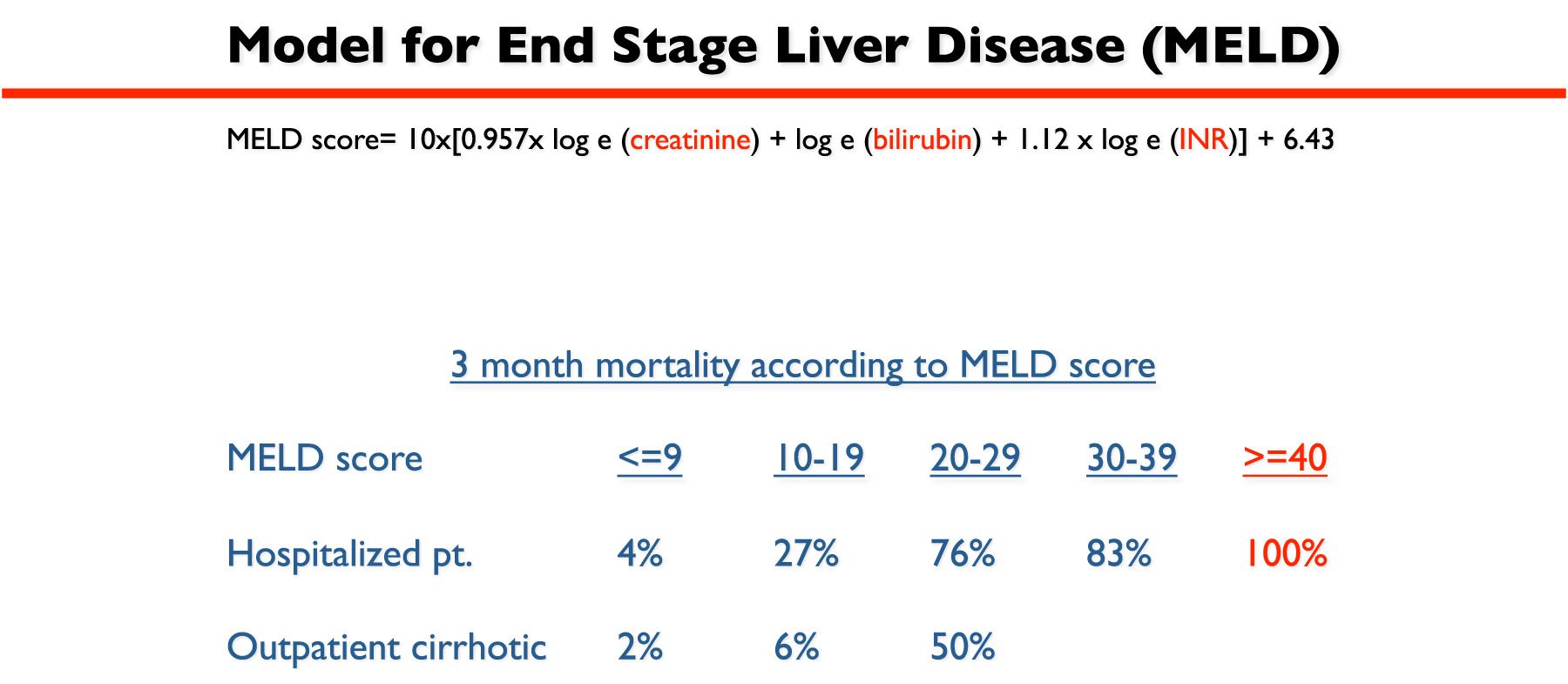

When MELD scores were dichotomized as >or=17 and <17, risk-adjusted Cox proportional-hazard ratios for 6-month mortality were 2.5 (95% confidence interval, 1.2 to 5.3) and 2.5 (95% confidence interval, 1.1 to 5.4) for the UMHS and INTERMACS cohorts, respectively. Odds ratios, measuring the ability of MELD scores to predict perioperative mortality, were 1.5 (95% confidence interval, 1.1 to 2.0) and 1.5 (95% confidence interval, 1.1 to 2.1) per 5 MELD units for the UMHS and INTERMACS cohorts, respectively.

At about the time we published the score, the. The score was originally called the Mayo End-Stage Liver Disease (MELD) model and was shown to be superior to the Child-Turcotte-Pugh score. The Child-Pugh scoring system (also known as the Child-Pugh-Turcotte score) was designed to predict mortality in cirrhosis patients. Each 10-unit increase in total perioperative blood product exposure increased the odds of operative death (odds ratio, 1.05 95% confidence interval, 1.01 to 1.10). We developed a score based on these variables and demonstrated it predicted survival in a wide variety of patients with cirrhosis not undergoing TIPS.

Each 5-unit MELD score increase was associated with 15.1+/-3.8 units (beta+/-SE) of total perioperative blood product exposure. In the UMHS cohort, median total perioperative blood product exposure was 74 units (25th and 75th percentiles, 44 and 120 units). The Model for End-Stage Liver Disease, or MELD, is a scoring system for assessing the severity of chronic liver disease. MELD is the short form for the Model for End-Stage Liver Disease, a scoring system that is used for gauging prognosis and determining priority for receipt. The mean+/-SD MELD scores for the UMHS (n=211) and INTERMACS (n=324) cohorts were 13.7+/-6.1 and 15.2+/-5.8, respectively, with 29 (14%) and 19 (6%) perioperative deaths. The ability of preoperative MELD scores to predict operative mortality was evaluated in subjects enrolled in the Interagency Registry of Mechanically Assisted Circulatory Support (INTERMACS), and results were compared with those from the UMHS cohort. Univariate and multiple regression analyses were performed to investigate the ability of patient characteristics, laboratory data (including MELD scores), and hemodynamic measurements to predict total perioperative blood product exposure and operative mortality. Preoperative MELD scores were calculated for subjects enrolled in the University of Michigan Health System (UMHS) mechanical circulatory support database. The Model for End-Stage Liver Disease (MELD) predicts events in cirrhotic subjects undergoing major surgery and may offer similar prognostication in left ventricular assist device candidates with comparable degrees of multisystem dysfunction.


 0 kommentar(er)
0 kommentar(er)
